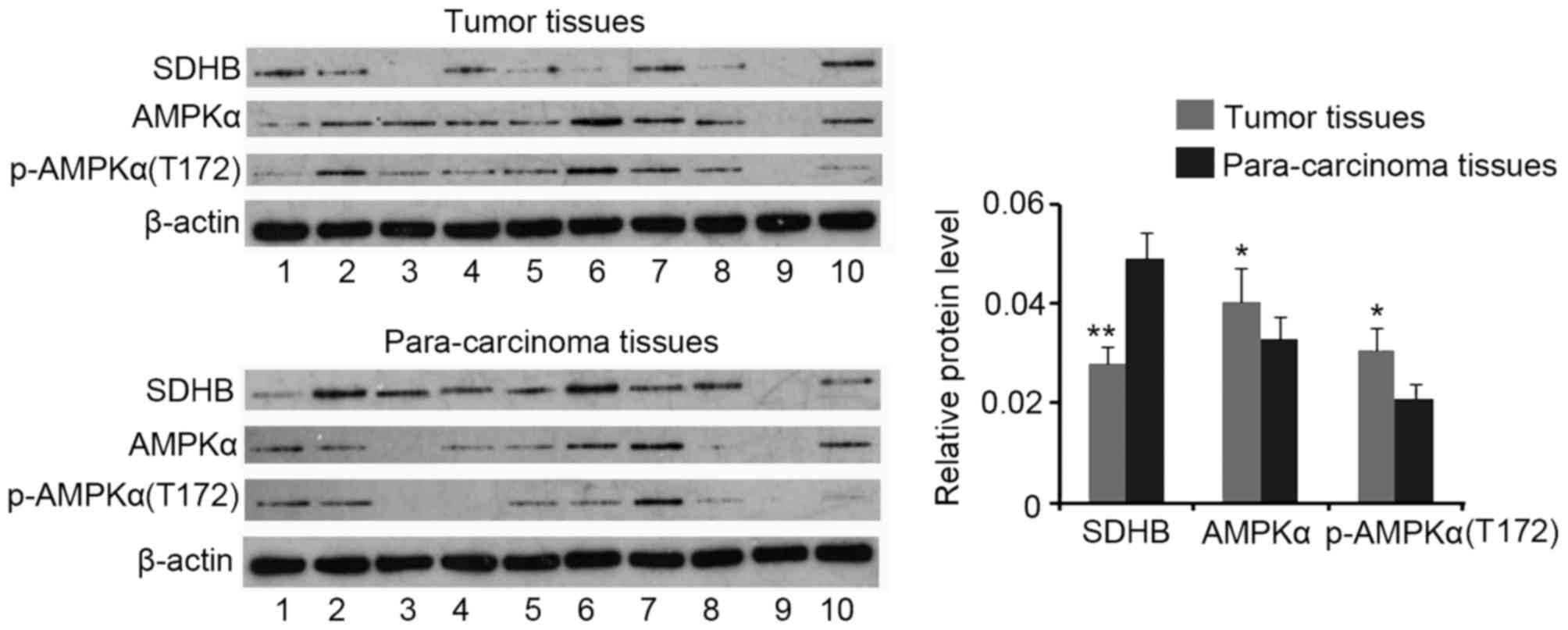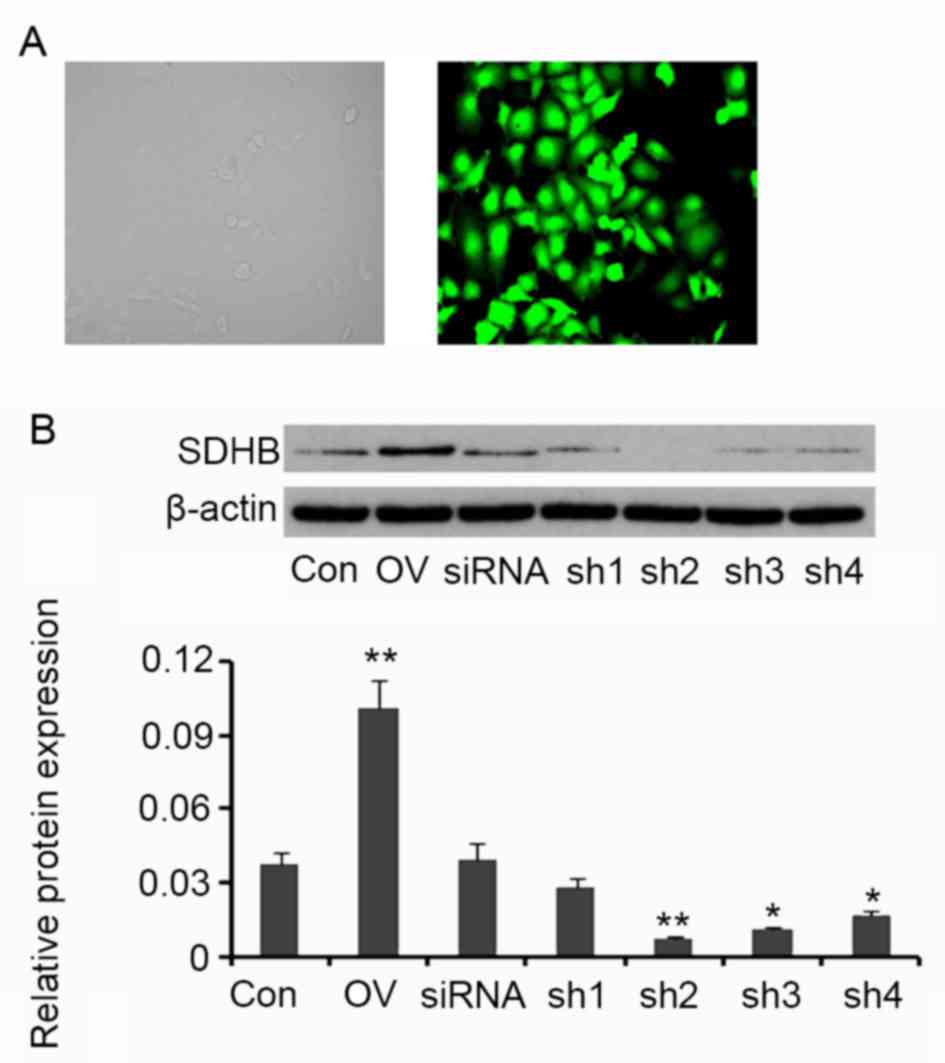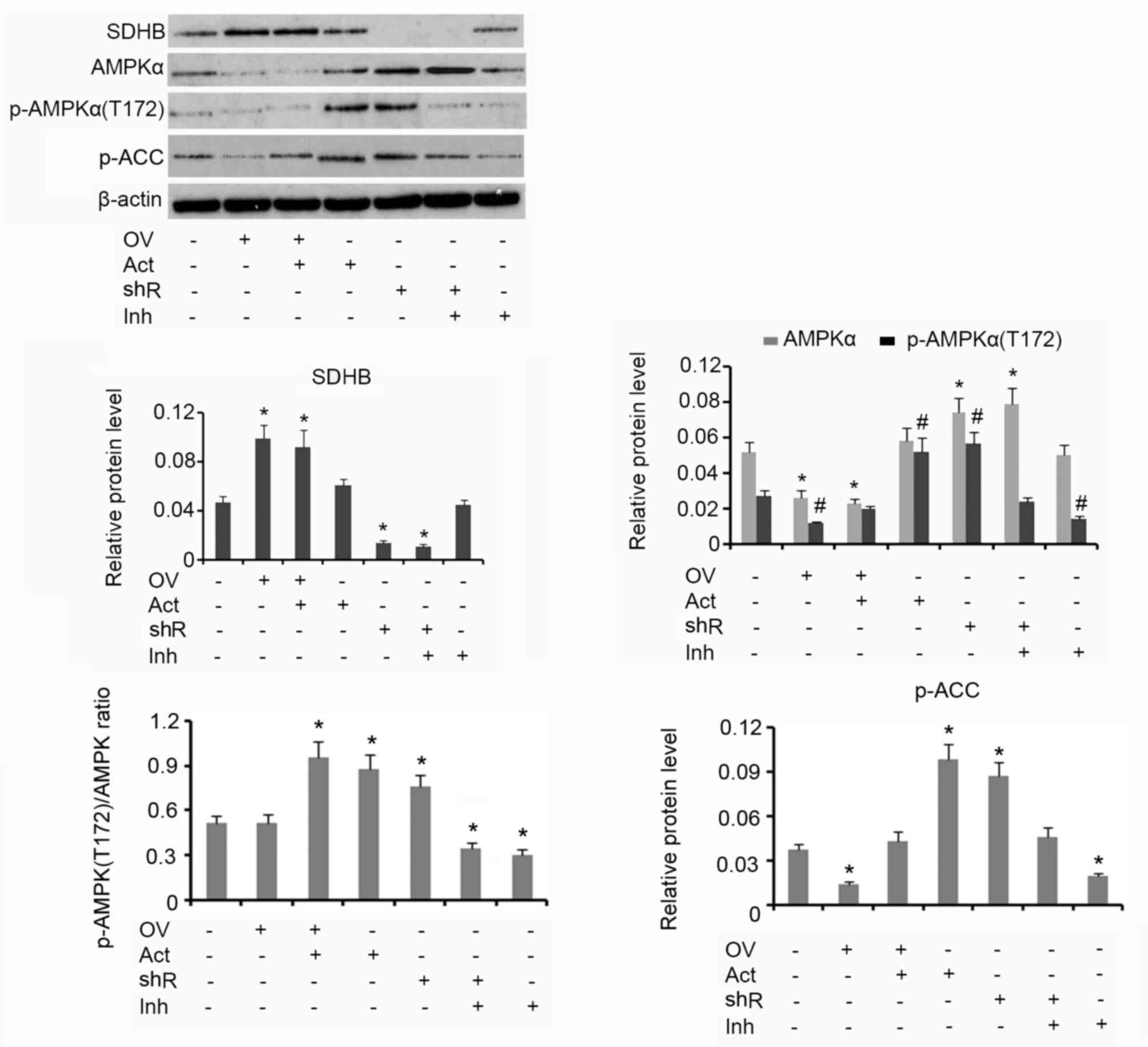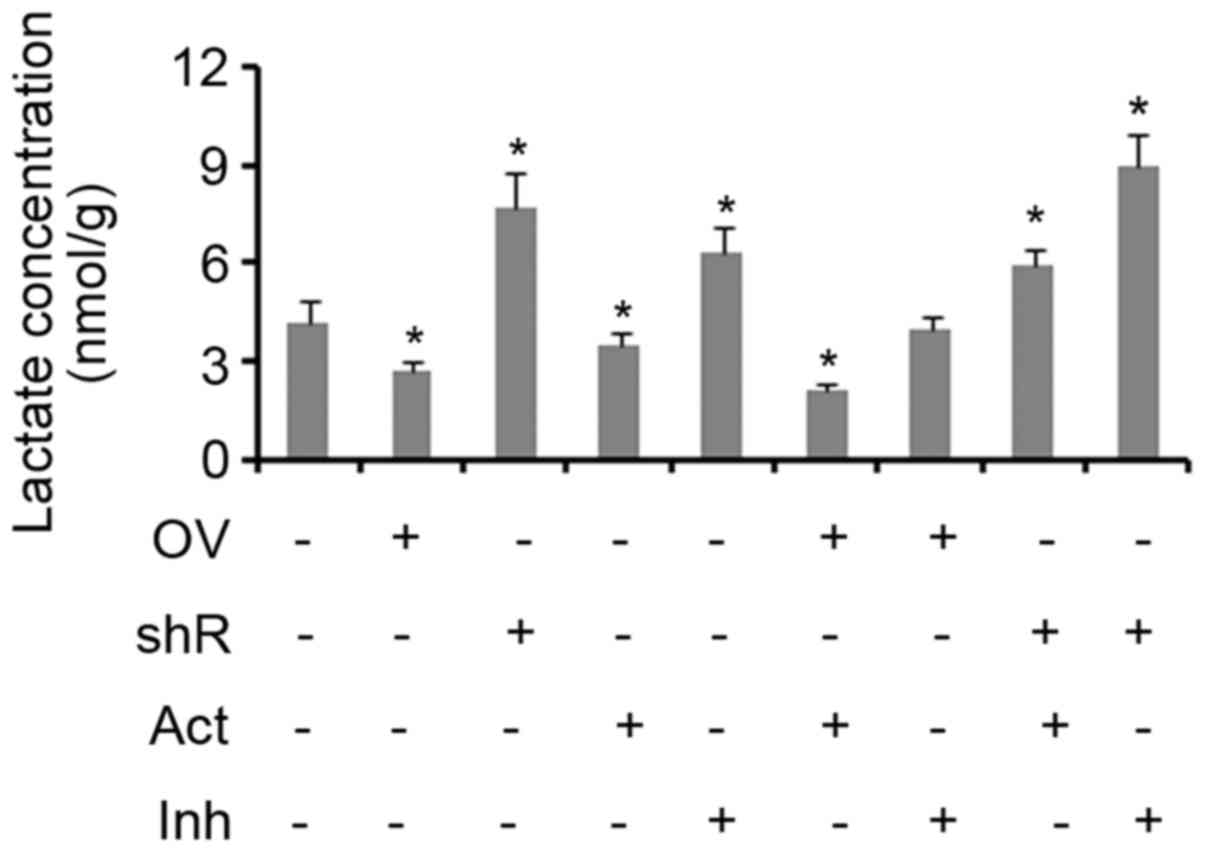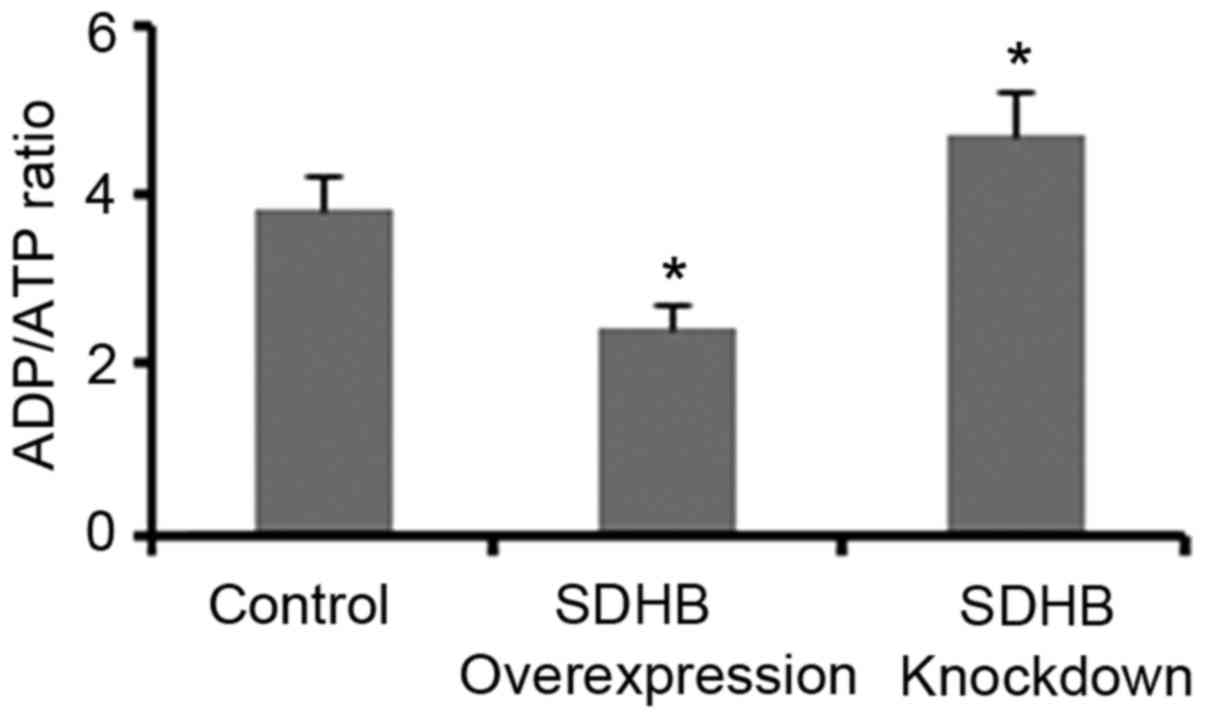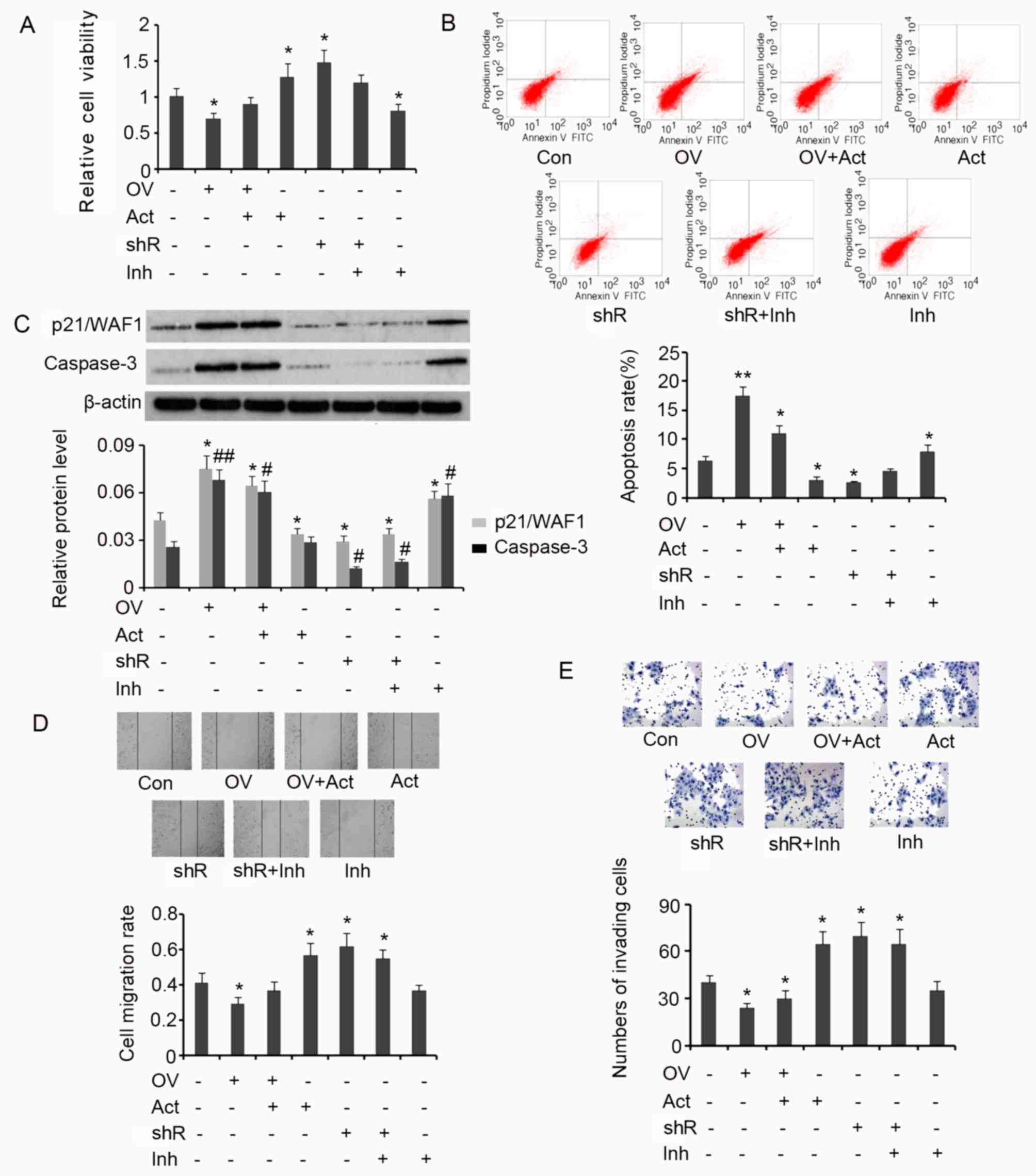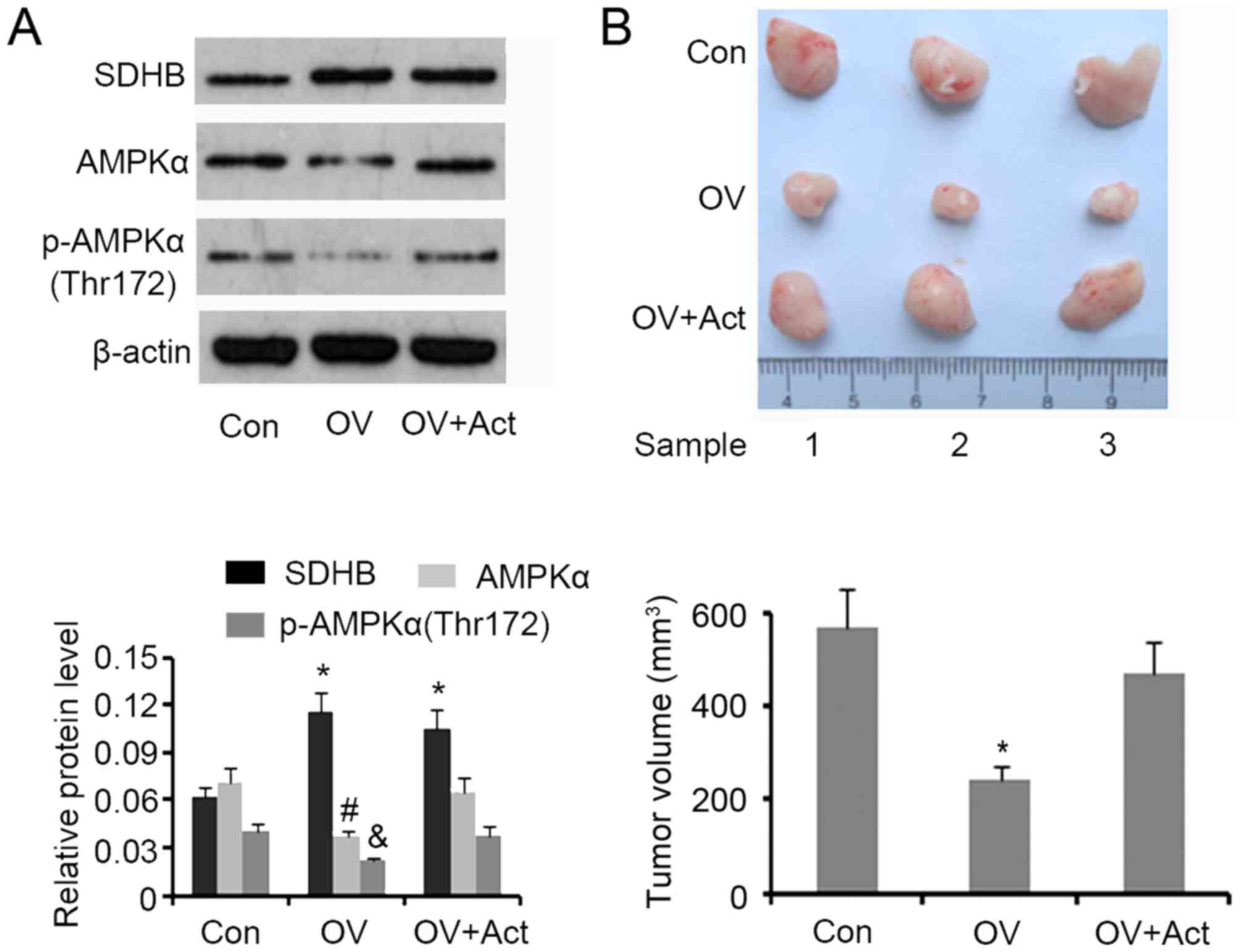|
1
|
Li M, Song LH, Yue GG, Lee JK, Zhao LM, Li
L, Zhou X, Tsui SK, Ng SS, Fung KP, et al: Bigelovin triggered
apoptosis in colorectal cancer in vitro and in vivo via
upregulating death receptor 5 and reactive oxidative species. Sci
Rep. 7:421762017. View Article : Google Scholar : PubMed/NCBI
|
|
2
|
Sprowl-Tanio S, Habowski AN, Pate KT,
McQuade MM, Wang K, Edwards RA, Grun F, Lyou Y and Waterman ML:
Lactate/pyruvate transporter MCT-1 is a direct Wnt target that
confers sensitivity to 3-bromopyruvate in colon cancer. Cancer
Metab. 4:202016. View Article : Google Scholar : PubMed/NCBI
|
|
3
|
Taniguchi K, Sugito N, Kumazaki M,
Shinohara H, Yamada N, Matsuhashi N, Futamura M, Ito Y, Otsuki Y,
Yoshida K, et al: Positive feedback of DDX6/c-Myc/PTB1 regulated by
miR-124 contributes to maintenance of the Warburg effect in colon
cancer cells. Biochim Biophys Acta. 1852:1971–1980. 2015.
View Article : Google Scholar : PubMed/NCBI
|
|
4
|
Parra-Bonilla G, Alvarez DF, Al-Mehdi AB,
Alexeyev M and Stevens T: Critical role for lactate dehydrogenase A
in aerobic glycolysis that sustains pulmonary microvascular
endothelial cell proliferation. Am J Physiol Lung Cell Mol Physiol.
299:513–522. 2010. View Article : Google Scholar
|
|
5
|
Lee N and Kim D: Cancer metabolism:
Fueling more than just growth. Mol Cells. 39:847–854. 2016.
View Article : Google Scholar : PubMed/NCBI
|
|
6
|
Gu Z, Xia J, Xu H, Frech I, Tricot G and
Zhan F: NEK2 promotes aerobic glycolysis in multiple myeloma
through regulating splicing of pyruvate kinase. J Hematol Oncol.
10:172017. View Article : Google Scholar : PubMed/NCBI
|
|
7
|
Cardaci S, Zheng L, MacKay G, van den
Broek NJ, MacKenzie ED, Nixon C, Stevenson D, Tumanov S, Bulusu V,
Kamphorst JJ, et al: Pyruvate carboxylation enables growth of
SDH-deficient cells by supporting aspartate biosynthesis. Nat Cell
Biol. 17:1317–1326. 2015. View
Article : Google Scholar : PubMed/NCBI
|
|
8
|
Saxena N, Maio N, Crooks DR, Ricketts CJ,
Yang Y, Wei MH, Fan TW, Lane AN, Sourbier C, Singh A, et al:
SDHB-deficient cancers: The role of mutations that impair iron
sulfur cluster delivery. J Natl Cancer Inst. 108:2016. View Article : Google Scholar : PubMed/NCBI
|
|
9
|
Kuroda N, Yorita K, Nagasaki M, Harada Y,
Ohe C, Jeruc J, Raspollini MR, Michal M, Hes O and Amin MB: Review
of succinate dehydrogenase-deficient renal cell carcinoma with
focus on clinical and pathobiological aspects. Pol J Pathol.
67:3–7. 2016. View Article : Google Scholar : PubMed/NCBI
|
|
10
|
Mason EF, Sadow PM, Wagner AJ, Remillard
SP, Flood TA, Belanger EC, Hornick JL and Barletta JA:
Identification of succinate dehydrogenase-deficient bladder
paragangliomas. Am J Surg Pathol. 37:1612–1618. 2013. View Article : Google Scholar : PubMed/NCBI
|
|
11
|
Marín-Aguilar F, Pavillard LE, Giampieri
F, Bullón P and Cordero MD: Adenosine Monophosphate (AMP)-activated
protein kinase: A new target for nutraceutical compounds. Int J Mol
Sci. 18:pii: E2882017. View Article : Google Scholar
|
|
12
|
Ata R and Antonescu CN: Integrins and cell
metabolism: An intimate relationship impacting cancer. Int J Mol
Sci. 18:pii: E1892017. View Article : Google Scholar
|
|
13
|
Li Q, Qin Y, Wei P, Lian P, Li Y, Xu Y, Li
X, Li D and Cai S: Gas1 inhibits metastatic and metabolic
phenotypes in colorectal carcinoma. Mol Cancer Res. 14:830–840.
2016. View Article : Google Scholar : PubMed/NCBI
|
|
14
|
Navarro P, Bueno MJ, Zagorac I, Mondejar
T, Sanchez J, Mourón S, Muñoz J, Gómez-López G, Jimenez-Renard V,
Mulero F, et al: Targeting tumor mitochondrial metabolism overcomes
resistance to antiangiogenics. Cell Rep. 15:2705–2718. 2016.
View Article : Google Scholar : PubMed/NCBI
|
|
15
|
Chen L, Liu T, Zhang S, Zhou J, Wang Y and
Di W: Succinate dehydrogenase subunit B inhibits the AMPK-HIF-1α
pathway in human ovarian cancer in vitro. J Ovarian Res. 7:1152014.
View Article : Google Scholar : PubMed/NCBI
|
|
16
|
Wang YY, Attané C, Milhas D, Dirat B,
Dauvillier S, Guerard A, Gilhodes J, Lazar I, Alet N, Laurent V, et
al: Mammary adipocytes stimulate breast cancer invasion through
metabolic remodeling of tumor cells. JCI Insight. 2:e874892017.
View Article : Google Scholar : PubMed/NCBI
|
|
17
|
Devic S: Warburg effect - a consequence or
the cause of carcinogenesis? J Cancer. 7:817–822. 2016. View Article : Google Scholar : PubMed/NCBI
|
|
18
|
Zhang D, Fei Q, Li J, Zhang C and Sun Y,
Zhu C, Wang F and Sun Y: 2-deoxyglucose reverses the promoting
effect of insulin on colorectal cancer cells in vitro. PLoS One.
11:e01511152016. View Article : Google Scholar : PubMed/NCBI
|
|
19
|
Festuccia C, Gravina GL, D'Alessandro AM,
Muzi P, Millimaggi D, Dolo V, Ricevuto E, Vicentini C and Bologna
M: Azacitidine improves antitumor effects of docetaxel and
cisplatin in aggressive prostate cancer models. Endocr Relat
Cancer. 16:401–413. 2009. View Article : Google Scholar : PubMed/NCBI
|
|
20
|
Dai Z, Pan S, Chen C, Cao L, Li X, Chen X,
Su X and Lin S: Down-regulation of succinate dehydrogenase subunit
B and up-regulation of pyruvate dehydrogenase kinase 1 predicts
poor prognosis in recurrent nasopharyngeal carcinoma. Tumour Biol.
37:5145–5152. 2016. View Article : Google Scholar : PubMed/NCBI
|
|
21
|
Zhang D, Wang W, Xiang B, Li N, Huang S,
Zhou W, Sun Y, Wang X, Ma J, Li G, et al: Reduced succinate
dehydrogenase B expression is associated with growth and
de-differentiation of colorectal cancer cells. Tumour Biol.
34:2337–2347. 2013. View Article : Google Scholar : PubMed/NCBI
|
|
22
|
Cervera AM, Apostolova N, Crespo FL, Mata
M and McCreath KJ: Cells silenced for SDHB expression display
characteristic features of the tumor phenotype. Cancer Res.
68:4058–4067. 2008. View Article : Google Scholar : PubMed/NCBI
|
|
23
|
Monteverde T, Muthalagu N, Port J and
Murphy DJ: Evidence of cancer-promoting roles for AMPK and related
kinases. FEBS J. 282:4658–4671. 2015. View Article : Google Scholar : PubMed/NCBI
|
|
24
|
Lipovka Y and Konhilas JP: AMP-activated
protein kinase signalling in cancer and cardiac hypertrophy.
Cardiovasc Pharm Open Access. 4:pii: 1542015.
|
|
25
|
Moreira JD, Hamraz M, Abolhassani M, Bigan
E, Pérès S, Paulevé L, Nogueira ML, Steyaert JM and Schwartz L: The
Redox Status of Cancer Cells Supports Mechanisms behind the Warburg
Effect. Metabolites. 6:pii: E332016. View Article : Google Scholar
|
|
26
|
Lustgarten MS, Jang YC, Liu Y, Qi W, Qin
Y, Dahia PL, Shi Y, Bhattacharya A, Muller FL, Shimizu T, et al:
MnSOD deficiency results in elevated oxidative stress and decreased
mitochondrial function but does not lead to muscle atrophy during
aging. Aging Cell. 10:493–505. 2011. View Article : Google Scholar : PubMed/NCBI
|



